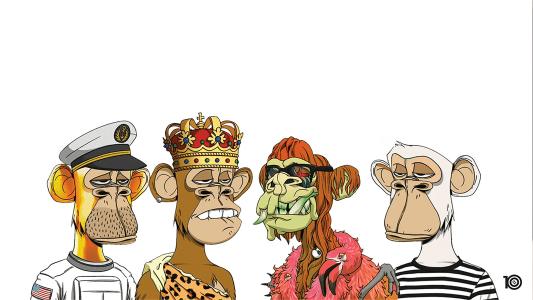First, there was Facebook. Then Microsoft and Nike became the latest major corporations to announce they are investing in the metaverse. It’s easy to see why this move makes sense for Facebook and Microsoft, both technology companies used by billions across the globe to connect, work and play with each other.
The world’s biggest social media platform is so committed to moving into the metaverse, the platform’s parent company recently announced it was rebranding to Meta (pending legal negotiations with an existing software company of the same name).
Nike’s motivations might not be so immediately apparent, however — what does a clothing brand have to do with a metaverse? But its decision to move into e-commerce on the metaverse may prove to be the most telling of the three.
The burgeoning metaverse
“There’s this huge zeitgeist within the crypto space now for this metaverse commerce,” Justin Banon, co-founder of Boson Protocol, told Forkast.News. “[The metaverse] is the next iteration of an interface where the current paradigm for e-commerce is shopping on a 2D interface — but that’s really substandard … It’s like a whole dimension collapse. And so, the metaverse is giving us the ability to have all the benefits of digital, social and the ability to create amazing experiences and all of this stuff, but not having to travel — to make it fully immersive.”
Boson Protocol is building decentralized commerce infrastructure for Web 3.0 to allow for smart contracts to enable real-world commerce without relying on a centralized intermediary. By encoding non-fungible token “vouchers” with game theory, if either the buyer or the seller in an exchange do not honor the agreement of the sale, the game theory code kicks in automatically and the funds and NFTs are returned to their respective parties. This effectively addresses the same issue oracles do in decentralized finance — how does a smart contract trust real-world data?
“You just have that ‘Aha’ moment; you just go in, and you think, ‘of course this is going to work.’ I can go from Facebook here and then I’ll go over to a concert that somebody is putting on…It’s going to be the compression of cosmopolitanism and virtual reality.”
Kieren Seymour
Earlier this year, Boson bought a plot of virtual real estate in Ethereum-based metaverse Decentraland for US$704,000 — still one of the highest amounts paid on the platform. The firm has been using this land to develop its metaverse commerce project, Portal, which is slated for release later this month. Portal will offer an opportunity to explore a fully immersive digital shopping center or “expo” full of digi-physical items represented as NFTs. Users will explore this space as their own personalized avatar, and being digi-physical, the items can be used to adorn their avatar as they explore the metaverse, as well as be worn in real life as well.
“When you get into Decentraland, you just get it,” Kieren Seymour from Neon Parc Gallery, Melbourne, told Forkast.News, explaining the feeling of stepping into the metaverse for the first time. “You just have that ‘Aha’ moment; you just go in, and you think, ‘of course this is going to work.’ I can go from Facebook here and then I’ll go over to a concert that somebody is putting on. It’s like walking around New York City, but it’s walking around Melbourne City, but it’s walking around Singapore. It’s going to be the compression of cosmopolitanism and virtual reality.”
Seymour is the owner of a virtual plot of land in Decentraland with plans to build a gallery space in it. He’s also working on a Ph.D. in painting, with part of that investigation looking at the way figures are represented as avatars in digital spaces. While the Decentraland gallery has taken a backseat to his studies for the meantime, he’s still excited by the opportunities for creativity and socializing in the space — being able to connect with other artists from all over the world in a fully immersive space.
Decentraland’s native cryptocurrency MANA rose over 500% in a matter of days following the announcement of Facebook’s rebranding, reaching a new all-time high of US$4.69, according to data from CoinMarketCap. Though its price has since started receding, the sudden jump in price highlights the level of interest from the crypto industry in Facebook’s involvement in metaverses. But Seymour, who has been researching and investing in crypto since the early 2010s, remains skeptical a giant like Facebook would be looking to integrate blockchain technology into its metaverse and sees the rebranding as more of a marketing stunt.
“[The rebranding] is insane; that should indicate the desperation of wanting to get on top of this trend,” Seymour said. “When an enormous big tech company says they’re interested in decentralization, it’s to me an analog to greenwashing, community, recyclable, whatever. They’re grabbing the zeitgeist and trying to co-opt it. There is no way a company like Facebook will be able to have a decentralized platform.”
Digi-physical clothing
Showing there are serious brands — and serious money — already beginning to flow into the digi-physical clothing world, Boson recently bought the NFT of Dolce and Gabbana’s “Glass Suit” for 351 wETH, or around US$1 million at the time, making it the most expensive suit the luxury fashion brand had ever sold. The digital version of the suit will exist in the metaverse making up the centerpiece of Portal’s collection, though may be lent out to adorn someone’s avatar at a high-profile event. The physical version will remain in Dolce and Gabbana stores for the next few months before perhaps finding its way into a museum as a piece of art history.
The digital version of the suit will exist in the metaverse making up the centerpiece of Portal’s collection, though may be lent out to adorn someone’s avatar at a high-profile event.
In the not-too-distant past, digital shadows in the form of social media accounts were not even thought of, but are now ubiquitous. Banon foresees the integration of digital wares into people’s everyday clothes as the natural progression of the integration with the metaverse and the enmeshing of our digital lives — taking digi-physical NFTs out of the realm of collectors and making them part of everyday life.
“I don’t think I’ll be allowed to pick [my daughter] up from school with a pair of sneakers that doesn’t have some sort of digital shadow [in coming years],” he said. “Maybe three months ago, brands were curious. Now every single one of those brand managers we speak to has to have a plan for NFTs.”
But there are more practical applications to this technology beyond the collectible. At the moment, any item purchased in-game, such as a new character skin in Fortnight for example, would become useless and worthless if the game’s developers decide to shut the game down. This itself is another promise of Web 3.0, that a decentralized game or application is unable to be shut down or hacked by one central party intermediary — its fate left to the community. If those items were minted as an NFT, however, they could be brought into any interoperable metaverse, as the item would maintain its immutable property rights through the minting process.
All of a sudden, pieces of digital art or clothing can take on a more important status.
“What you probably bought if you bought [a] Gucci handbag as an NFT, is a family heirloom and a piece of fashion history,” Banon says. “Property rights are driving a lot of the push towards crypto-based multiverses because if you’re going to invest all this money, you’re actually going to own them.”
Art sales in the metaverse
It’s not just digi-physical clothing that has been moving onto the metaverse. Auction house Sotheby’s has been at the forefront of implementing cryptocurrency and blockchain into their business model in the auction industry. A July auction of the “Key 10138” diamond set the record for the greatest amount paid for a physical item when it was sold for HK$95.1 million (US$12.3 million) worth of an undisclosed cryptocurrency.
“Property rights are driving a lot of the push towards crypto-based multiverses because if you’re going to invest all this money, you’re actually going to own them.”
Justin Banon, co-founder of Boson Protocol
But the 277-year-old auction house is also embracing the technology by holding NFT art auctions inside its own metaverse in Decentraland. The Natively Digital 1.2 concluded late last month after attracting 1,500 bids with a total turnover of US$18.6 million after nine days of bidding and setting a few price records along the way. This includes the #8817 Ape by Bored Ape Yacht Club, which sold for US$3.4 million.
“The Natively Digital sale that just closed was really a celebration of the collectors that have, with steadfast and unwavering commitment, paved the way for what I believe is generations to come of collecting taste and style and preference in this new era that we’re approaching,” Max Moore, Sotheby’s head of contemporary art sales, Asia told Forkast.News.
As so many businesses did, Sotheby’s saw a slump in sales at the beginning of the pandemic last year, led by worldwide financial instability and an inability for clients to visit onsite galleries. The company saw there was an appetite for online sales in lieu of this and quickly pivoted to this mode of commerce. It might seem strange to think about, but in early 2020, not many people were thinking about NFTs — Moore was introduced to them in September 2020 and while he immediately saw the potential, the market and the caliber were not quite there yet to meet the auction house’s standards.
“We’re in a world that is traveling at light speed towards a completely technological universe, with everyone having an iPhone or some sort of digital component as an extension of themselves.”
Max Moore, Sotheby’s head of contemporary art sales
Digital art is not necessarily new, but as Moore saw that blockchain provided a structure for digital art to be traded in an impactful way and to have a marketplace around it.
“The speed at which the overall [NFT] market rose is quite astonishing, we’ve never seen anything like that,” Moore said. “It’s a testament both to the creators and their artwork, but also to our ever-growing society that is consistently evolving and integrating with technologies at every turning corner. And I think any great artist or any great art movement is a real reflection of that current time.”
Moore says holding an NFT auction inside a metaverse was the best opportunity to showcase the art and engage with the community, that the new digital era should be experienced through the new digital medium. While Natively Digital 1.2 is the first Sotheby’s auction to take place in the metaverse, given the number of bids and its turnover, clearly there was considerable interest in the project.
“We’re in a world that is traveling at light speed towards a completely technological universe, with everyone having an iPhone or some sort of digital component as an extension of themselves,” Moore said. “So, I think it’s only natural that artists would start to capture this sentiment through an art form. We’ve already seen it with contemporary art — you have some postmodern artists or post-internet artists that are using digital media to create physical artworks as a commentary. But taking this a step further, it only makes sense that the commentary on digital art should take on a digital form, and I think blockchain technology has allowed for this adoption to occur at such an incredible pace.”
Games in the metaverse
There are already some well-established games that could have been described as metaverses — “Second-Life” has been around for years, allowing people to interact with avatars of each other in an online world. The popular “World of Warcraft” allowed for much of the same thing, except with the inclusion of rather more violence.
Including blockchain and NFTs transforms these spaces further, however, creating new possibilities for value to be created and therefore new avenues for gaming. Axie Infinity merged earlier this year as the runaway success of the new play-to-earn model of game, which would actually pay people in its own in-game currency for playing the game. Despite the value of its currency dropping over the past few months, it still hosts a thriving community of players — some of which are able to earn their living entirely off the game.
Interest in NFTs in the gaming space has grown so much that even major gaming developers are making public stances on whether to incorporate them. Major developer Valve announced late last month it is not going to support NFTs on its game store, as the company does not allow the use of items in games that have real-world value. In the wake of the announcement, competitor Epic Games announced that while it has not planned to directly adopt them yet, they welcome “innovation in the areas of technology and finance,” leaving the door open to the possibility.
“It’s very obvious to me that every single gaming studio or publisher in the world is looking at NFTs,” Derek Lau, game director of blockchain-based game Guild of Guardians, told Forkast.News. “There’s almost too much attention in this space to ignore it. You’d be ignorant to not at least think about whether you should do something … I expect that we’ll see this come to fruition from a user perspective in the next two years.”
Much like Banon foresaw NFTs enabling interoperability in the commerce metaverse space, so too does Lau in the gaming space, with the NFTs of skins or items being able to be shared between games or metaverses. This represents another part of the promise of a decentralized Web 3.0, where people are able to build and trade without the need for intermediaries. Theoretically, not only would this make the process much more democratic, but also allows for longer-term planning.
Using an earlier example, it would be difficult to monetize Fortnight as a third party because if the game’s developers decided to take the game down, all that progress would be lost. Blockchain could also allow positions to arise for people to make referrals to games, where those people could earn a percentage of a referral fee as a mechanism to grow the game.
“What blockchain enables that hasn’t happened before is the opportunity for people to build and develop something without having fear that the underlying game or experience is going to be taken away because it’s decentralized,” Lau said. “What the blockchain allows is that it allows people to build with confidence.”
This article was originally published on Forkast. Read the original article here.






